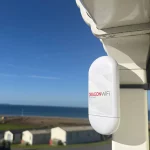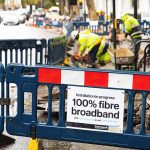Gov Responds to NIC Assessment of UK Broadband Infrastructure
The government has published an “interim response” to the National Infrastructure Commission’s assessment of the UK’s long-term infrastructure needs (here), which among other things called for nationwide coverage of “full fibre” (FTTP) broadband by 2033 and for a ‘National Broadband Plan’ to be devised by Spring 2019.
The original assessment was published in July 2018 and since then the Government has already published new proposals as part of their recent Future Telecoms Infrastructure Review (FTIR), which echoed much of what the NIC wanted (Ofcom then proposed a number of related regulatory changes). The NIC is also now examining market regulation (here) and it remains to be seen whether they will come up with any new ideas.
Suffice to say that the Government’s “interim response” to the NIC’s assessment (we note that these are only conducted “once-a-parliament“) doesn’t add anything new on the broadband front and merely serves to echo the changes that have already been announced up to and including the FTIR.
Advertisement
However the government have said that they will “formally respond to the NIA in 2019,” not least by publishing a “comprehensive” National Infrastructure Strategy (NIS).
Government Response – Broadband and mobile telecoms
2.15 In the coming decades our digital infrastructure will be key to driving economic growth. This is why the government is committed to achieving a nationwide full fibre broadband network by 2033, and for the majority of the population to be covered by a 5G signal by 2027.
2.16 The government recently published its Future Telecoms Infrastructure Review (FTIR). This built on the NIC’s recommendations for upgrading our telecoms networks, and agreed with the NIA’s recommendations that network competition is the key driver for rapid fibre rollout, and new “barrier-busting” measures were needed to reduce the cost of deployment. The FTIR was clear that the switchover from copper to full fibre networks should be led by industry, working closely with the government and Ofcom. The government has committed to set up a mechanism to plan switchover.
2.17 We have already committed over £1 billion to developing the next generation of digital networks, including a £200 million Local Full Fibre Networks programme, the £67 million Gigabit Voucher Scheme, the £400 million Digital Infrastructure Investment Fund, and £200 million for trialling new 5G technology.
2.18 At the Budget, the government is committing £200 million from the NPIF to pilot new approaches to deploying full fibre connectivity to rural locations to ensure no region is left behind when it comes to connectivity.
2.19 We are also launching two consultations reflecting NIC recommendations. These will improve certainty for investors in the UK’s digital infrastructure by helping remove barriers to rollout, reduce deployment costs, and make investment more attractive for the industry [ISPr Editors Note: These reflect the new build homes etc. changes announced yesterday].
Meanwhile the NIC confirms that it has been directed by the Chancellor to examine the resilience of the UK’s infrastructure, which will “consider what action government should take to ensure that infrastructure can cope with future changes, disruptions, shocks and accidents” (yep.. another review). This will focus on services like utilities, transport and telecommunications.
The new review will look at how other countries deliver their infrastructure, develop an understanding of public expectations (inc. how they respond to the loss of vital infrastructure services), undertake various ‘stress tests’ (testing sectors, areas and organisations), analyse the resilience of economic infrastructure systems and the costs / benefits of improvements.
Sir John Armitt, Chairman of the NIC, said:
“The nation’s infrastructure is not only critical for our economic success and prosperity, it’s central to each of our daily lives.
Whether it’s the roads and railways that take us to our destinations, the telecoms that connect us or the energy we use to heat our homes, we all rely on these systems running smoothly.
Our new study will examine how we can ensure our infrastructure is fit to cope with future changes and challenges, while at the same time capitalising on the opportunities presented by an increasingly digital world.”
The NIC will aim to publish their final report and recommendations in spring 2020, which on the broadband front will probably end up proposing more or less exactly what the Government expects to do anyway.
Advertisement
Mark is a professional technology writer, IT consultant and computer engineer from Dorset (England), he also founded ISPreview in 1999 and enjoys analysing the latest telecoms and broadband developments. Find me on X (Twitter), Mastodon, Facebook, BlueSky, Threads.net and Linkedin.
« Which? Identifies the Most Moaned About UK Broadband ISPs

















































Comments are closed